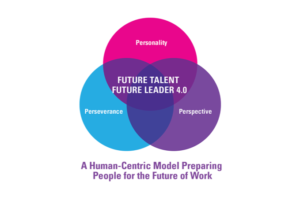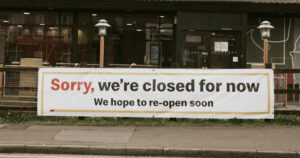The protests against systemic patterns of racism and police brutality following George Floyd’s death, the success of female heads of state leading their countries through the global pandemic, and the recent United States Supreme Court decision prohibiting workplace discrimination based on gender identity or sexual orientation are just a few of the topics that are spurring discussions about diversity and inclusion (D&I) right now.

Although these current events have brought D&I to the forefront, this topic should not be new in the workplace — addressing D&I concerns should be a critical priority for all organizations. However, many organizations struggle to create diverse workplaces, especially at the highest levels, and to promote cultures that allow all employees to feel heard and included.1 Fortunately, organizations can leverage Hogan assessments to help address these concerns and create a more diverse and inclusive culture.
Defining Diversity and Inclusion
There are different ways to define D&I in the context of the workplace. These borrowed definitions are helpful ways for us to better understand what we are referencing when discussing diversity and inclusion2:
- Diversity concerns all the ways people differ from each other. Though this is often limited to race, ethnicity, and gender, it more broadly includes age, nationality, religion, disability, sexual orientation, socioeconomic status, education level, marital status, language, and physical appearance. Diversity also includes differences in ideas, perspectives, and values.
- Inclusion concerns creating working environments where everyone feels welcomed, respected, supported, and valued. Inclusive environments embrace diversity.
Why Should We Care about Diversity and Inclusion?
Both diversity and inclusion should be important to organizations as they seek to do the right thing, avoid legal recourse, and deliver key business outcomes. Given these reasons, it’s not surprising that the majority of survey respondents (75%) in a recent study by Pew Research consider it important for their organizations to promote diversity in the workplace.3
Even if there were no moral imperative or risk of legal challenges, organizations could not ignore the strong business case for creating a diverse workplace. As one example, some estimates suggest that organizations with higher levels of gender diversity can outperform organizations that lack female representation by up to 58%.4
The positive impact does not stop there. Organizations with more D&I practices tend to have lower levels of absenteeism and turnover and higher levels of organizational innovation and performance. However, even with these notable outcomes, many employees still say their organizations are not doing enough to create inclusive environments.
How Can Hogan Help Your Diversity and Inclusion Goals?
There are a few reasons you should consider using Hogan’s personality assessments in your D&I efforts. First, personality assessment promotes fairness in selection. Our research shows that personality is a strong predictor of performance without producing meaningful subgroup differences. This means we recommend solutions that can help you identify the best talent without discriminating against any group, thereby preserving diversity in applicant pools. Contrary to popular misconception, using personality for selection does not create a workforce of people who have the same personality profile. Hogan creates selection profiles that are specific for each job and would vary across jobs within the same organization. Within a job, we typically only screen on a few personality characteristics for which people will have diverse scores on scales in the profile range and even more so across other personality characteristics.
Second, you can use Hogan’s personality tools to identify and develop leaders who will promote diversity and inclusion. We analyzed data from more than 5,000 individuals to explore the components of Hogan’s personality inventories that predict supervisor ratings on behaviors, such as
- discouraging discrimination and prejudice;
- relating well to a variety of people;
- recognizing the unique potential of each person;
- showing respect, tolerance, and open-mindedness;
- respecting views different from one’s own;
- treating others with respect regardless of race, gender, appearance, religion, and beliefs;
- valuing diverse perspectives;
- displaying sensitivity to issues related to diversity and culture;
- having the ability to see the world through the eyes of others; and
- displaying sensitivity to the needs of others.
We meta-analyzed within-study correlations across 47 organizations and found that Adjustment, Interpersonal Sensitivity, Prudence, and Altruism had positive relationships with behaviors related to diversity and inclusion. Additionally, Excitable, Skeptical, Bold, Mischievous, Recognition, and Power had negative relationships with D&I behaviors. This suggests that people who are optimistic, perceptive, warm, conscientious, tolerant, open-minded, not defensive, trusting, modest, humble, honest, sympathetic, and concerned about helping others will work to foster an environment of inclusivity, regardless of race, age, gender, background, and ideas.
Implications
The importance of diversity and inclusion and the steps you need to take to make your workplace more diverse and inclusive cannot be outlined in a short blog. In fact, half-baked attempts at improving D&I initiatives can have negative impacts. An appropriate organizational culture is necessary to nurture diversity and inclusion. Some research suggests that organizational diversity structures alone, such as diversity policies, diversity training, and diversity awards, can cause white males to have illusory perceptions of fair decision-making procedures impacting minorities (i.e., a “we checked the box” attitude).5 This can lead to white males reacting harshly to claims of discrimination because they might assume all D&I issues have been addressed. Further, we haven’t even touched on the complexity of thinking about diversity in a global context.
While we cannot give you a silver bullet, we do provide these practical recommendations for consideration in your larger D&I initiatives:
- First, use the Hogan Personality Inventory (HPI), Hogan Development Survey (HDS), and Motives, Values, Preferences Inventory (MVPI) to select and promote all employees to increase diversity, hire qualified candidates, and promote fairness in hiring. Using assessments that do not discriminate will lead to more diversity at all levels.
- Second, use the HPI, HDS, and MVPI to select, promote, and develop leaders who will create a diverse and inclusive environment.
- Finally, use the HPI, HDS, and MVPI to provide feedback to employees and enhance their awareness of biases they might have that could stifle D&I efforts.
For more information, make sure you check out our webinar on the topic. You can also listen to our recent The Science of Personality podcast episodes, “Women in Leadership” and “SCOTUS LGBTQ Decision and What It Means for Your Organization.”
*This post was authored by Amber Burkhart, Kimberly Nei, Chase Winterberg, and Jessica Walker.
References
- Jones, S. (2017, June 9). White Men Account for 72% of Corporate Leadership at 16 of the Fortune 500 Companies. Fortune. https://fortune.com/2017/06/09/white-men-senior-executives-fortune-500-companies-diversity-data/
- Kapila, M., Hines, E., Searby, M. (2016, October 6). Why Diversity, Equity, and Inclusion Matter. Independent Sector. https://independentsector.org/resource/why-diversity-equity-and-inclusion-matter/
- Horowitz, J. M. (2019, May 8). Americans See Advantages and Challenges in Country’s Growing Racial and Ethnic Diversity. Pew Research Center. https://www.pewsocialtrends.org/2019/05/08/americans-see-advantages-and-challenges-in-countrys-growing-racial-and-ethnic-diversity/
- Moran, G. (2017, January 23). How These Top Companies Are Getting Inclusion Right. Fast Company. https://www.fastcompany.com/3067346/how-these-top-companies-are-getting-inclusion-right
- Kaiser, C. R., Major, B., Jurcevic, I., Dover, T. L., Brady, L. M., & Shapiro, J. R. (2013). Presumed fair: Ironic effects of organizational diversity structures. Journal of Personality and Social Psychology, 104(3), 504–519. https://doi.org/10.1037/a0030838




 The amount of text data we send out in the world is staggering. On average, there are 500 million tweets sent per day, 23 billion text messages, and 306.4 billion emails. Everything we say, every email we send, and every word on our resumes can be used to understand the world around us, and it also gives us clues about the individual speaking or writing. Hogan’s Data Science team is exploring how best to capture text data and harness its power in understanding human nature. Below are some frequently asked questions that people unfamiliar with text-based machine learning often ask us.
The amount of text data we send out in the world is staggering. On average, there are 500 million tweets sent per day, 23 billion text messages, and 306.4 billion emails. Everything we say, every email we send, and every word on our resumes can be used to understand the world around us, and it also gives us clues about the individual speaking or writing. Hogan’s Data Science team is exploring how best to capture text data and harness its power in understanding human nature. Below are some frequently asked questions that people unfamiliar with text-based machine learning often ask us.








